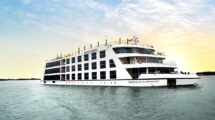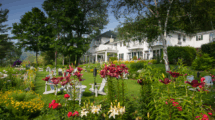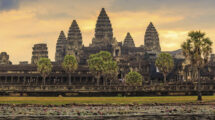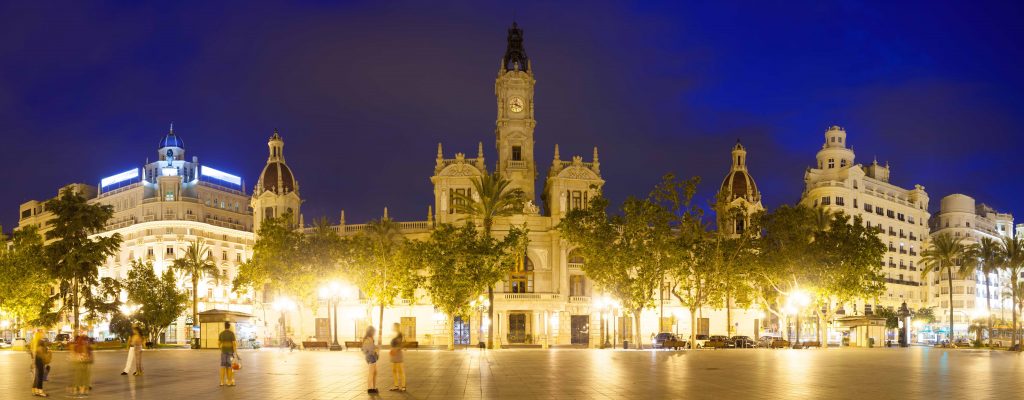
By Mary Ann Simpkins
You won’t get enough
Visitors to Spain largely bypass Valencia. Yet, the country’s third largest city, just south of Barcelona, bursts with Mediterranean exuberance. Spanish Baroque, Gothic and Renaissance-style buildings co-exist with futuristic architecture and miles of sandy beach stretching along the coast to the birthplace of paella. Once, Spain’s richest city with a port considered among Europe’s most important, Valencia lost much of its lustre under Franco’s dictatorship. The city was one of the last holdouts against the fascists. Bullet holes still pocket a massive gate in an old city wall. My sister remembers her visit in the 1960s. “It was run-down and isolated. The Guardia Civil manned roadblocks into the city,” recalls Janice Simpkins. After Franco’s death in 1975, the city began revitalizing its historic centre. A maze of narrow roads, many more like alleyways, weave past elegant old buildings to stone-paved squares. Outdoor cafes pop-up everywhere, the tables full until late in the evening as dinner usually begins after nine.
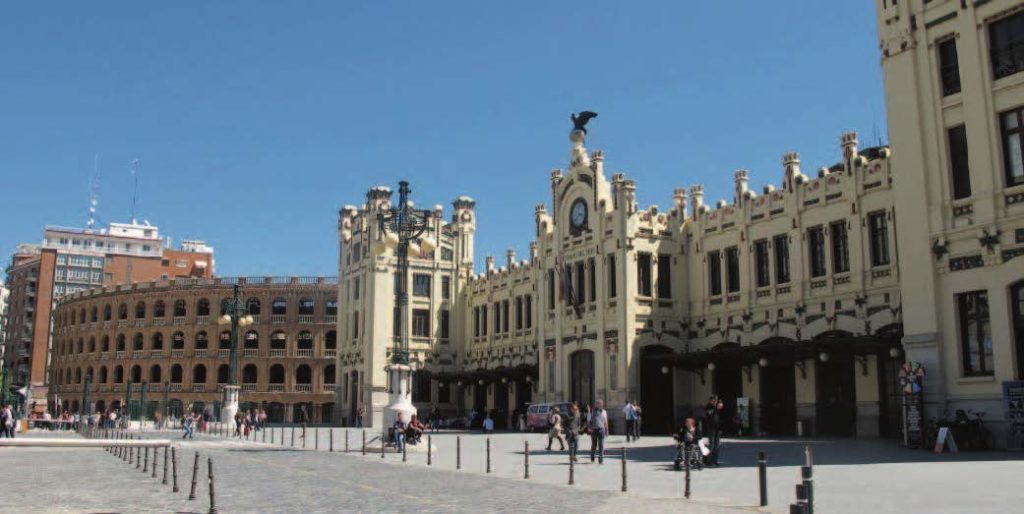
Plaza de la Virgin
Zeus reclines within a water fountain on Valencia’s most historic square, Plaza de la Virgin. Romans, who founded the city in 138 BC, located their Roman Forum here. Next, the Visigoths. They built a cathedral here. The Moors followed, replacing the church with a mosque. That mosque became the foundation of the city’s present-day cathedral. On the plaza today, cafes overlook two churches, the Water Court and Valencia’s regional government seat. Sundays, worshippers pack the pink stone 17th century Basilica de Nuestra Señora de los Desamparado. With its blue-tiled dome and reddish Carrera marble walls, the baroque church’s ornate interior outshines that of the adjacent cathedral. Constructed from the 13th to 15th century, the cathedral reflects the decades’ changing architecture styles, from Baroque to Neoclassical. The bell tower offers soaring views of the city, that is, if you’re not completely exhausted from mounting over 200 stone steps. Renaissance-style paintings above the high altar represent the relationship between Spain and Italy, an association which began with the Borgias. The family, notorious in Italian history, came from a small town outside Valencia. Alfonso Borgia was the city’s bishop before becoming Pope Callixtus III. His family followed, to take advantage of his position. Small chapels edge the church. A glass case holds the severed mummified arm of St. Vincent, the city’s patron saint, martyred in 304. Spotlights illuminate The Holy Chalice, believed to be the cup Jesus drank from at the Last Supper. Decorated with gold, pearls and precious gems, the Jewish 1st century cup rests on an Islamic alabaster base with an Arabic inscription meaning “brilliance.” Sculpted biblical figures surround the Water Court’s Door of the Apostles. Thursdays at noon, you might catch a ritual dating back, centuries. Dressed in traditional black robes, the water tribunal meet outside to settle disputes between farmers over irrigation. Their decision is final. Although, even if you speak Spanish, you may not understand. Proceedings are in the Valencian language.
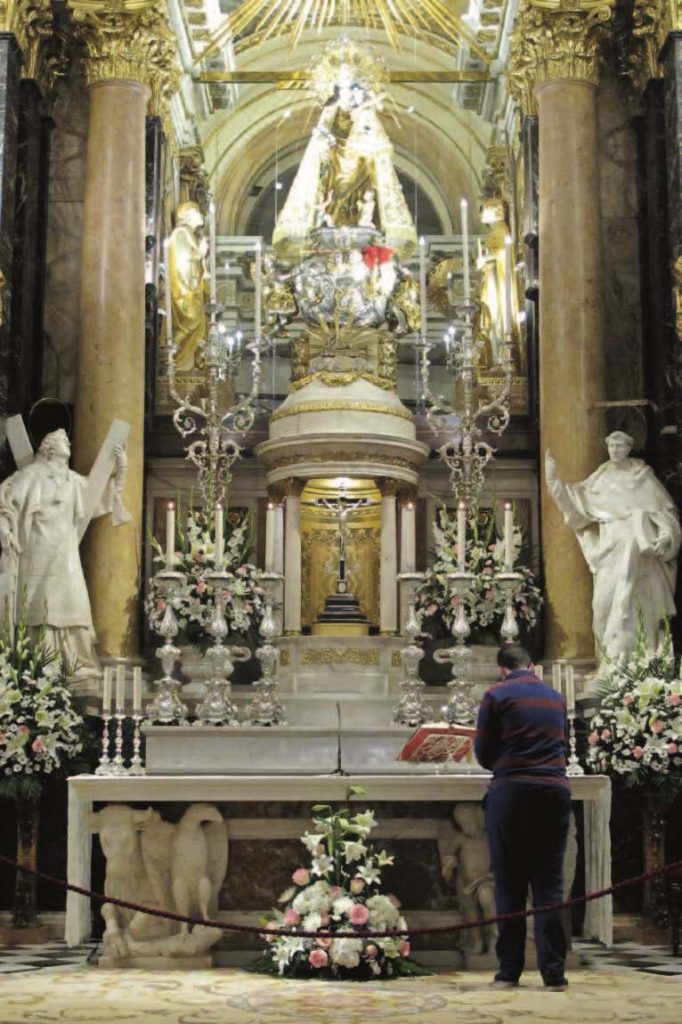
Elsewhere in the historic centre
Behind the basilica, the modern glass L’Amoina acts as the city’s archaeological centre, housing relics from Roman, Visigoth and Arab periods. Walk around the ruins of a Roman bath, Visigoth tombs and a Moorish castle. Silk made Valencia wealthy, thanks to Arabs who introduced mulberry trees, silkworm’s sole food. The silk trade peaked in the 15th century. In the massive stone Silk Exchange, La Longa de la Seda, spiral columns fan out like palm trees upon the main hall’s vaulted ceiling. A Silk Trail walking tour also visits the Silk Museum where you can watch silk being woven on an 18th century loom. The Moors also brought lusterware, metallic glazed pottery, inaugurating the city’s ceramic industry. Hand-painted tiles from Valencia decorate palaces throughout Europe. Production waned in the 19th century, but some continue to this day. At Lladro’s suburban factory, artists hand-paint delicate figurines. Even if pottery doesn’t excite you, visit the National Museum of Ceramics in the former 15th century palace of the Marquése dos Aguas (the Marquis of Two Waters). A statue of the Virgin sits above an entry framed by two male nudes. Water symbolizing the city’s two rivers flows from twin pitchers at their feet. The extreme rococo-style alabaster façade only hints at the luxury inside. Along with displays of 14th to 20th century ceramics, the house features the Marquis’ gilded 18th century coach, Meissen porcelain-decorated chairs, the noble’s 19th century bedroom and antechamber. Tapestries, marble tiles and paintings cover every inch of wall. For a week in March, the city bursts with the recreated medieval festival, Las Fallas, announcing the arrival of spring. Streets fill with fireworks, concerts and over 600 Fallas (figures made of wood, papier mache and fibreglass intended to make a satirical point, some reaching 25-metres high). The festival culminates in front of city hall where a huge bonfire burns all except one, voted the best by citizens. An old convent turned into the Museum of Las Fallas displays the winners.
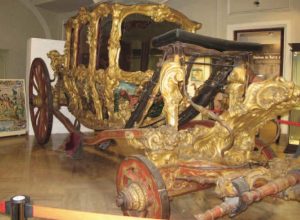
City of Arts and Sciences
A flood in 1959 launched the modernistic City of Arts and Sciences in Valencia’s suburb. Politicians decided to divert the Turia River, replacing the 15-kilometre tract with roads. The public objected: they wanted a park. In a move unusual in Spain at the time, families demonstrated and won. “It was a miracle,” says guide Jose-Vicente. Trees planted on the riverbed shade a park, nine kilometres of cycling and walking paths and the vast City of Arts and Sciences. Avant-garde buildings housing a science museum, a planetarium, IMAX theatre, performing arts centre, amphitheatre, Berkeley School of Music’s only campus outside Boston and the Oceanografic.
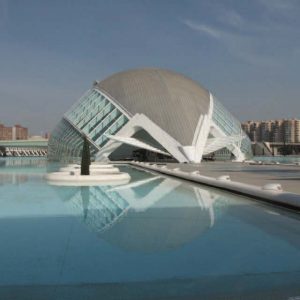
Europe’s largest aquarium works jointly on beluga whales with the Vancouver Aquarium. Bioparc occupies another section of the riverbed. Congolese gorillas, Madagascan lemurs and Nile hippos are among the 150 different species roaming free in this strictly African zoo. The 1 p.m. bird show features eagles, vultures and wild boars. Valencia is the home of paella, thanks to rice established by the Moors. Rice paddies line the road south of the city en route to Albufera Lake. To irrigate the rice fields, Arabs closed the passage between two salt-water rivers creating Spain’s largest freshwater lake. Some of the original one-room houses of mud walls and straw ceilings still border the lake. Cruises run by Valencia Excursions double as birdwatching tours. From an open wood boat, we spotted herons that nest here. Afterwards, we walked to a bird-viewing area attracting some 35 species. Among them, to my surprise, were white flamingos. The tour ends at a fine sandy beach that extends 80 kilometres south from Valencia. Further down the coast, the sand is coarse, and rocks litter the water.
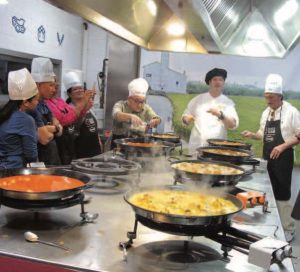
Paella
Four-course lunch menus in restaurants often include a rice dish, usually paella. Restaurants specializing in paella pack the boardwalk of Arenas Beach. The most famous is La Pepica where Ernest Hemingway brought his bullfighting friends. I had a delicious rice dish made with squid ink, shrimp and other seafood. Or make your own at the School of Rice and Valencia Paella. In my class were another Canadian, and couples from the U.S. and Italy. The course began at the Central Market. Under a stained-glass dome and iron-vaulted beams are more food stalls than any other market in Europe. We bought spices and vegetables along with chicken and rabbit, the traditional ingredients first used by peasants. Some opted for a seafood version. At the school, we stood behind huge paella pans and followed the chef’s instructions. The five-hour session ends with appetizers, our own paella and wine. I made so much paella, I asked for a doggy bag.
If you go
- No airline offers direct flights from Canada to Valencia.
- Private Guides: itinerisvlc.com
- Valencia Tourism: visitvalencia.com
- Tours to Lake Albufera, Valencia Excursions: valenciaexcursions.com
- La Pepica restaurant: lapepica.com
- School of Rice and Valencia Paella; Escuela des Arroces y Paella Valenciana: escueladearrocesypaellas.com



